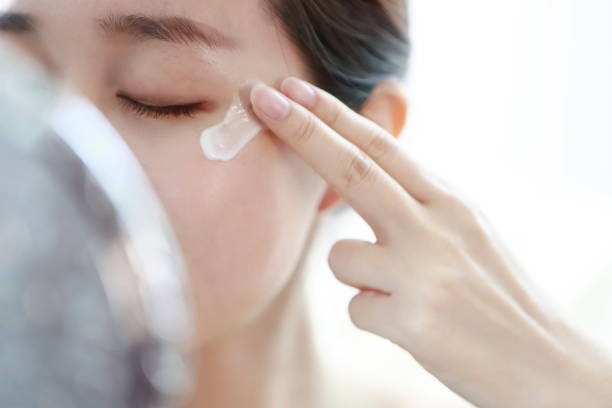Layering Skincare 101: How to Effectively Apply Serums and Skincare Creams

The “less is more” philosophy doesn’t imply neglecting your skin using a 3-in-one product but rather focusing on quality over quantity. When it comes to layering serums and skincare creams, the emphasis is on choosing products with purpose and effectiveness. The idea is to provide your skin with the necessary ingredients without overwhelming it with an excess of products.
Why People Use Serums and Skincare Creams
Targeted creams and serums are formulated with potent ingredients designed to address specific skin concerns, such as fine lines, hyperpigmentation, and dehydration. Serums, in particular, are known for their lightweight consistency and high concentration of active ingredients, making them ideal for targeting particular issues.
The Basics
Layering skincare is a crucial aspect of any effective beauty routine, and understanding the sequential steps can simplify what may seem like a complex process.
Step 1 – Cleansing
Begin with cleansing, using a gentle and suitable cleanser to remove impurities, excess oil, and makeup from your skin. This essential step removes accumulated impurities, excess oil, and makeup, providing a clean canvas for the rest of your skincare products. Gently massage the cleanser onto damp skin, then rinse thoroughly with lukewarm water.
Step 2 – Toning
Following cleansing, move on to the toning step. Apply a toner to a cotton pad or directly onto your skin, depending on the product type. Toners help balance the skin’s pH levels, making sure that it’s in an optimal state for the absorption of subsequent treatments. Additionally, toners can provide additional hydration before you apply your serums and skincare creams and remove any remaining traces of impurities.
Step 3 – Applying Serums
The next step involves applying serums, which contain a higher concentration of active ingredients compared to other skincare products like moisturizers or cleansers. This allows for a more targeted approach to addressing specific skin concerns. Choose a serum that addresses your specific skin concerns, whether it’s hydrating, brightening, or anti-aging. The lightweight consistency of serums allows the active ingredients to penetrate deeply into the skin.

Step 4 – Moisturizing with Skincare Creams
After applying serums and skincare creams come next. These creams lock in the benefits of the serums and provide additional hydration to the skin. But also, these creams are formulated to address specific skincare concerns, such as fine lines, wrinkles, hyperpigmentation, dehydration, or uneven skin tone.
Different serums may contain ingredients like antioxidants, hyaluronic acid, vitamin C, retinol, peptides, and more. Opt for a moisturizer that suits your skin type—whether it’s a gel-based formula for oily skin or a richer cream for dry skin.
Step 5 – Protecting with Sunscreen
The final and non-negotiable step after your serums and skincare creams in your daytime routine is protecting with sunscreen. Sunscreen shields your skin from harmful UV rays, preventing premature aging and protecting against potential damage. Choose a broad-spectrum sunscreen with at least SPF 30 and apply it generously to all exposed face and neck areas.
Knowing What to Pair
When it comes to serums and skincare creams, the market offers a plethora of formulations targeting various skin concerns. For instance, vitamin C serums are renowned for brightening, hyaluronic acid serums excel in hydration, and retinol serums are potent in addressing signs of aging. To boost the benefits, consider pairing vitamin C with vitamin E, as they work to neutralize free radicals and enhance each other’s effectiveness. Additionally, combining hyaluronic acid with peptides can provide a dual-action approach to hydration and firmness.
In moisturizers, ingredients such as ceramides, glycerin, and fatty acids maintain skin barrier function and prevent moisture loss. When paired with serums, these moisturizing ingredients complement the targeted treatment provided by the serums, creating a well-rounded skincare routine. For example, pairing a retinol serum with a moisturizer containing ceramides can help mitigate potential dryness or irritation.
Active Ingredient Combinations to Avoid in Serums and Skincare Creams
While pairing certain ingredients can be highly beneficial, it’s equally important to be aware of combinations that may cause irritation or diminish efficacy. For example, combining retinol with vitamin C in high concentrations may lead to sensitivity, as both ingredients can be potent on their own. Similarly, using products with active ingredients like benzoyl peroxide and vitamin C simultaneously may compromise their effectiveness.

Endnote
At Caprine Cosmetics, we boast a versatile and organic line of serums and skincare creams that address your skin issues at the root. We realize the importance of having a self-care regimen that is easy to follow yet yields maximum results, so we created that solution for you! Because we use natural ingredients such as goat’s milk, aloe, and rose hydrosols, our line can all be paired together and perform optimally when used together. To shop your new Holy Grail, visit our website today!
